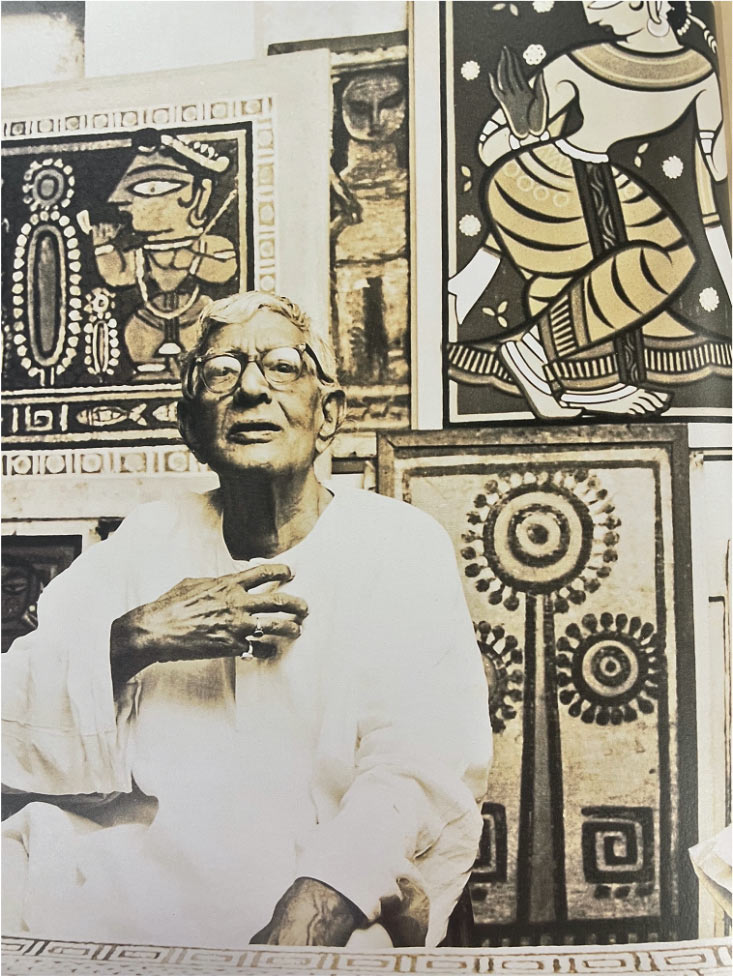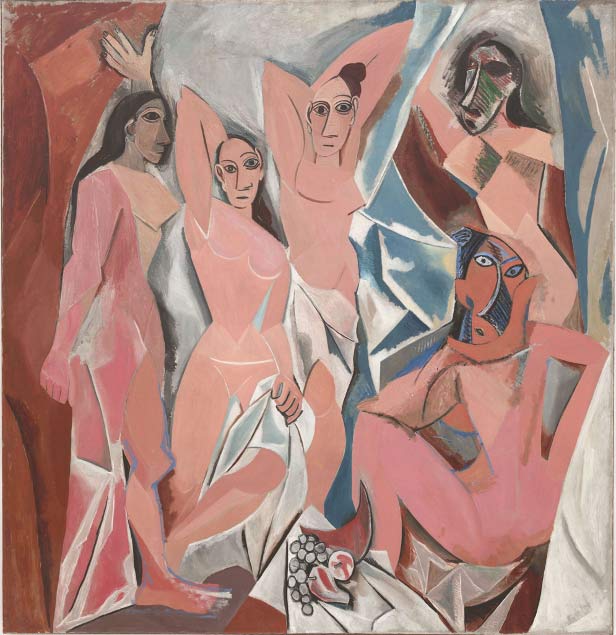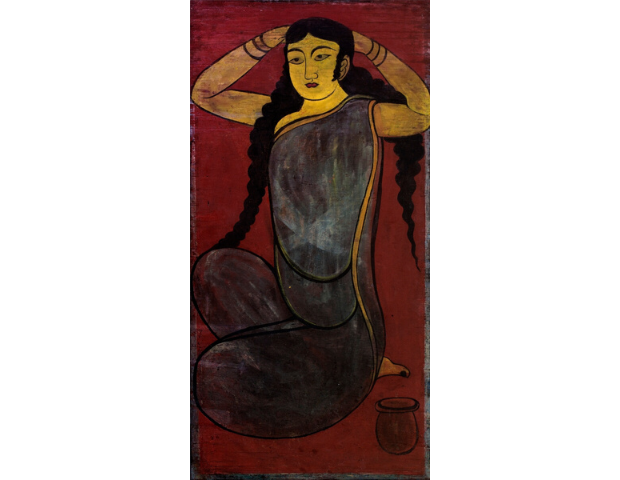Modern art is a continuum - so the above title is not appropriate but necessitated due to recent events. The artwork pictured here is crucially important and was extracted around 2017 from Jamini Roy’s residence in Ballygunge Place East. The work used to be so significant that it would be seen at the entrance of his studio and was used in every exhibition as a welcome continuing the Bengali tradition of Alpona.
Jamini Roy’s artworks have been described as one of the earliest Indian abstracts by Partha Mitter who has compared his works to Piet Mondrian in his research. Jamini was enamored by Van Gogh (more on this later) and the Alpona work is undoubtedly an abstraction of sunflowers.

Jamini Roy, Tempera on Plywood, circa 1930, 35.5 x 17.5 in.
Jamini is photographed in front of the same work. One can compare the blemishes, paint texture, and other details in the photograph to confirm that it is the same work.

PAVING THE WAY TO MODERNISM
In the Western world, there are many paths to modernism - Cezanne via analytical Cubism, some would even say Courbet with his Realism and portraiture of the ordinary. But an important and path-breaking artwork continues to be Les Demoiselles d'Avignon.

Pablo Picasso, Les Demoiselles d'Avignon, 1907
The use of African masks in two of the figures depicts the beginning of Cubism.
Jamini Roy used to be an academic portrait painter. So much so that Abanindranath asked him to paint a newer portrait of Debendranath Tagore as the one by Sashi Hesh was disintegrating (on a side note Ravi Varma never found traction in Bengal as such even though he is documented to have visited Bengal due to artists like Sashi Hesh and others who were already entrenched in the space). This portrait of Debendranath Tagore still hangs today at the Bangiya Sahitya Parishad in Kolkata. However, most of the portraits made at that time were from photographs of dead people (for example a portrait of Nandorani from Serampore - a part of the Prinseps collection). Jamini gave up a lucrative career as a portrait painter to find his own calling. There must have been some influence of Havell and Abanindranath in his thinking; since he was a graduate of the Government College of Art. He did not want to pursue the path of Mughal miniatures - instead, he wanted to look elsewhere for inspiration.
He was clearly inspired by Pats - Chakshudan Pat (itself scarce), Pats from Orissa, Village Patchitra (a generic definition), Kalighat Pats, etc. In fact in 2017 when the entire archive from his house in Ballygunge Place East was purchased along with all artworks and other related material (including the alpona artwork above) - we found examples of these pats.
While the artwork in Recto is very interesting and an example of early abstraction, the verso is what is important. In many of his early works (especially on the canvas ones or the ones on plywood), we find reuse - not surprising - he was in absolute penury for a good five years while experimenting with art (post his portraiture period). The reverse is a silhouette from Kalighat Pat but with a face inspired by a Village Patchitra. Likely one of the earliest experiments as Jamini developed his style.
 Seated lady in the style of Kalighat Pat (verso of Roy's Untitled(Alpana) Tempera on Plywood)
Seated lady in the style of Kalighat Pat (verso of Roy's Untitled(Alpana) Tempera on Plywood)

Kalighat Pat

Village Patchitra
Jamini is one of the earliest modernists though frankly finding his early works are extremely difficult and even difficult to identify. The quest continues…